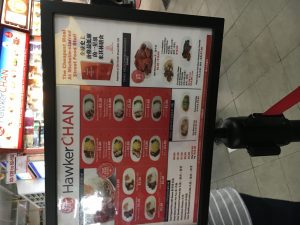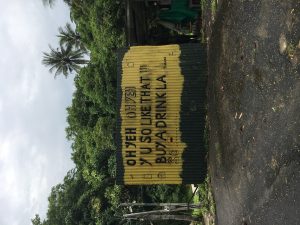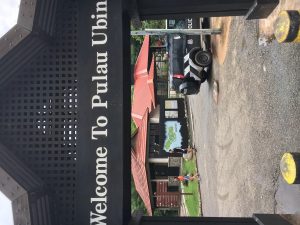Payton Chin
LING_343
Dr. Kim
27 June 2019
W4: Linguistic Landscape
In Singapore, English and Chinese are two of the four national languages, the other two being Tamil and Malay. Most of my days here always involve these two languages, with more of English than Chinese. Because I know how to speak Mandarin Chinese, I don’t mind going to places that primarily speak Chinese. For example, I eat most of my meals at local food stalls, which are managed by older Chinese people. Since their English is hard to understand at times, I prefer ordering and conversing in Chinese to make it easier for both parties. Interestingly too, even though my company is in Chinatown, I only speak English for work; this is most likely due to the younger average age of my company, with the oldest person only being approximately thirty years old. From my daily commutes to Chinatown, I’ve realized that all public signs are written only in English, but I don’t believe this supports a monolinguistic community. On the contrary, this means that many different nationalities can now reside here, using English as a neutral language. Since everyone in Singapore has learned and knows English to some degree, it makes sense that public signs are written in English. However, signs by private businesses in Chinatown usually do have either all or some Chinese on it, focusing on a more local crowd. Additionally, the languages I hear on the streets are usually non-English. I usually hear Mandarin, but I also hear a fair amount of Cantonese being spoken when I walk.
On the other hand, different neighborhoods have different written languages. I tend to shop a lot on Orchard Road, where the only language seen everywhere is English. A snapshot of the malls could easily be mistaken for the malls in the United States. I assume this to mean that Orchard Road caters to everyone, which I can affirm with my eyes when I see all the tourists and locals walking there. Because of many nationalities I see at Orchard Road, I also hear many different languages being spoken. Besides English and Chinese, I also hear Hindi, Hokkien, and various European languages from other tourists. The linguistic landscape in Singapore is very diverse due to the people who reside here. There isn’t one universal language because every area in Singapore has a different majority nationality, leading to an emphasis on a different language.
The historical context behind Singapore’s linguistic landscape is different than places in the United States. Chinese people had already resided in Singapore for generations, and they all tended to live close together in the area that would come to be known as Chinatown in Singapore. Because of the influx of Chinese immigrants, Singapore’s Chinatown expanded to an entire district instead of just one subzone, like in Washington, D.C. Leeman and Modan stated in their article, “In the case of Washington DC’s Chinatown, the state and private enterprise use symbols of Chinese ethnicity and culture, including language, graphics, and architectural forms, to turn Chinatown into a commodity, marketing it and the things in it for consumption.” Chinatowns in the United States had to rely on government support to grow and were also created with the purpose to boost the city itself; “selling Chinatown as a unique neighborhood both international and ethnic, has been part of a downtown redevelopment strategy designed to ‘preserve the historic scale, character, and heritage’ and ‘make downtown pedestrian in scale, colorful, and lively,’” (Leenan and Modan 340). This is very different from the Chinatown in Singapore, which has been growing for over one hundred years ever since the first Chinese immigrants started living here. The linguistic landscape in Singapore supports a variety of nationalities. English, with its dominance over most of the world, is enough to attract many foreigners already, and combined with Chinese, Malay, and Tamil, many people from Southern Asia would also be comfortable settling here. 


To be honest, before reading this linguistic landscape, I did not know that Singapore had four official languages! I think you offer an unique perspective as a Mandarin speaker, and it’s fantastic that you are able to leverage that to participate in the local food culture. I was quite surprised that you only use English for work, while English is still an integral part of Singaporean culture since it is able to connect all of these communities. I liked how you compared the Chinatown of Singapore to that of Washington, DC, because it helped to create a contrast between the two countries as well. Overall, it was a really interesting linguistic landscape to read and one that convinced me to put Singapore on my bucket list! Hope you are having a great internship!